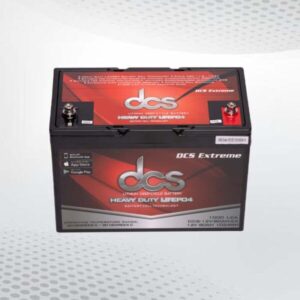An introduction to free electrical CAD software
In the field of electrical engineering and design, Computer-Aided Design (CAD) software plays a key role in simplifying the creation and analysis of electrical systems. While a few premium CAD tools dominate the market, there are also excellent free alternatives that will meet the needs of budget-conscious users or hobbyists. In this comprehensive guide, Our Softwares explore the best free electrical CAD software and break down their features, benefits, and potential use cases.
Understanding of electrical engineering CAD software
Before diving into the specifics of free CAD tools, it is important to understand the basic concept of Electrical CAD software. These programs are specialized tools designed to assist engineers and designers in creating, modifying, and analyzing electrical systems. They provide a digital platform for designing circuit diagrams, schematics and other electrical components, which ultimately helps in efficient planning and execution of electrical projects.
Importance of CAD in electrical engineering
CAD software has become an integral part of the electrical engineering process due to its numerous advantages. It allows users to visualize complex systems, identify potential problems, and simulate the behavior of electrical circuits before actual implementation. This not only saves time and resources, but also increases the overall reliability and security of the designed systems.
The best free electrical CAD software
Now let’s take a look at some of the best free electrical CAD software available, highlighting their features and potential applications.
KiCad
Overview:
KiCad is a popular open-source electrical CAD software that provides a comprehensive set of tools for designing printed circuit boards (PCBs) and schematics. It is known for its user-friendly interface and robust features, making it suitable for both beginners and experienced engineers.
Key properties:
• Schematic Capture:
KiCad allows users to easily create complex schematics, making it easier to represent complex electrical systems.
• PCB Layout:
The software provides a powerful PCB design tool that allows users to efficiently design and customize printed circuit boards.
• 3D Viewer:
KiCad includes a 3D viewer that allows users to visualize printed circuit board designs in three-dimensional space.
Use cases:
KiCad is suitable for a wide range of applications, from small hobbyist projects to professional electronic designs.
2. Fritzing
Overview:
Fritzing is a beginner-friendly CAD software designed for electronics enthusiasts, artists and educators. It simplifies the process of designing circuits and creating printed circuit board designs, making it an excellent choice for educational purposes.
Key properties:
• Breadboard View:
Fritzing offers a unique breadboard view that allows users to plan and prototype circuits on a virtual breadboard.
• Component Library:
The software comes with an extensive electronic component library, simplifying the component selection process.
• Export options:
Fritzing allows users to export their designs as images or production-ready Gerber files.
Use cases:
Fritzing is ideal for educational environments and prototyping small to medium-sized electronic projects.
3. LibrePCB
Overview:
LibrePCB is a modern open-source CAD application for PCB design. It boasts a user-friendly interface and a modular design that allows users to extend its functionality with plugins.
Key properties:
• Multi-platform support:
LibrePCB is compatible with Windows, macOS and Linux, providing flexibility in terms of operating systems.
• High-quality design:
The software focuses on creating high-quality PCB designs with attention to detail.
• Integrated Library Manager:
LibrePCB includes an integrated library manager for efficient component management.
Use cases:
LibrePCB is suitable for users who prioritize high-quality PCB designs and want a flexible, extensible CAD tool.
4. TinyCAD
Overview:
TinyCAD is a lightweight and easy-to-use electrical CAD software tailored for creating circuit diagrams. Despite its simplicity, it offers basic functionality for schematic design.
Key properties:
• Symbol Libraries:
TinyCAD supports custom symbol libraries that allow users to extend the available components.
• Cross-platform compatibility:
The software is compatible with Windows and can run on Linux using Wine, increasing its availability.
• Netlist Export:
Users can export netlists for further simulation or analysis.
Use cases:
TinyCAD is suitable for users who need a straightforward tool for creating circuit diagrams without the complexity of a complete PCB design.
Conclusion
Free electrical CAD software plays a key role in allowing engineers, hobbyists, and students to design and simulate electrical circuits without breaking the bank. The tools covered in this guide, such as KiCad, Fritzing, LibrePCB, and TinyCAD, offer different features to suit different user needs and skill levels. Whether you’re a seasoned professional or new to electrical engineering, these free CAD tools provide a valuable platform for turning innovative ideas into tangible electronic designs.







